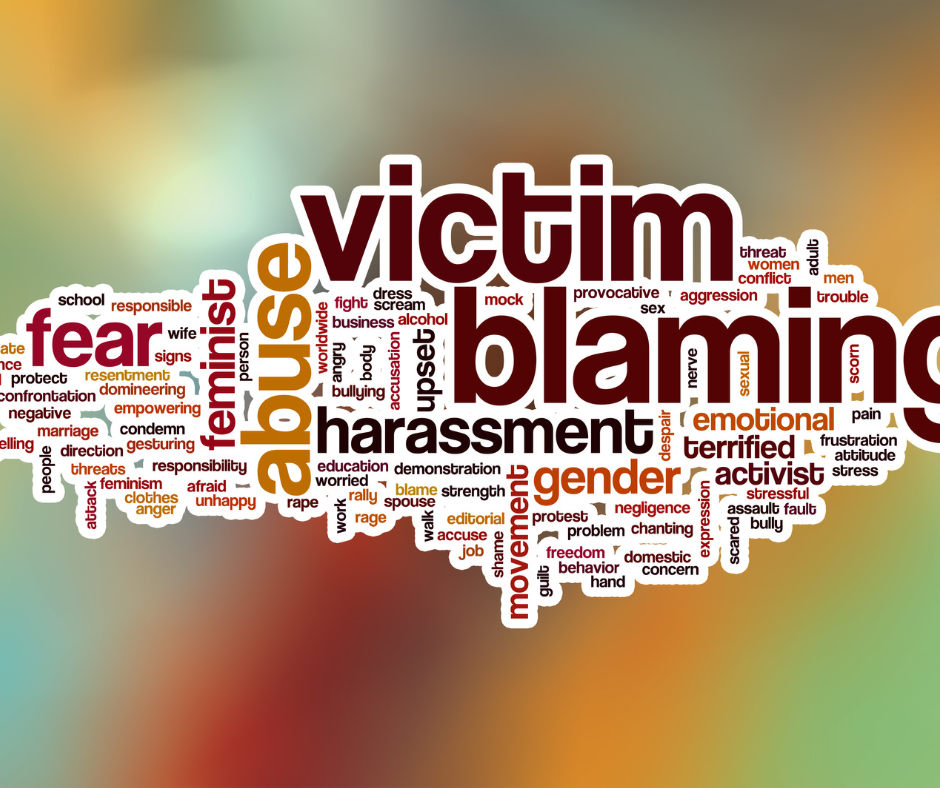Bullied targets must be careful about sharing their experiences as it is fraught with shame and guilt. It is common for our experiences to be discounted. But we still want validation and for people to believe and understand what we have been through.
Having shared some pretty intimate details about being bullied, the mental health professional asked me "In what ways has my negative attitude contributed to my continued involvement in problematic work environments?" The response I received by this mental health professional gave was typical and disappointing. It's common to hear this response, but it's alarming when it comes from someone who is supposed to understand and offer help instead of harming.
This response is just one example of victim blaming experienced by targets. Victim blaming is when you tell the target that their behavior, personality, thinking or mindset led to the bullying. It's their fault that bullying has taken place. Most times, blaming the victim is easier and more convenient than trying to understand the complexities of workplace bullying.
In workplace bullying situations, victim-blaming allows you to see it as my problem and not an organizational issue. Workplace bullying is described once again as a problem relating to individual workers rather than to organizational culture. It isn't that I am being abused or that my organization allows this kind of behavior, but rather, having a negative attitude, for example, makes me responsible for the issue. And this is wrong and leads to continued workplace bullying and trauma for targets.
In many organizations, bullying is already ingrained in the company culture. In other words, bullying norms, values, expectations, and behaviors are embedded in the organization's foundation, socializing workers into bullying. In a culture of bullying, workers are expected to adhere bullying behaviors, and fill the roles of target, bully, and bystander. The organizational culture rewards compliance and punishes resistance.
The targets are not causing bullying culture. A large number of targets are hired into abusive situations because organizations have bully culture.
Whenever a target leaves the workplace, bully culture demands that the role be filled. A role shift will replace the target role either internally, meaning another employee will fill the role or externally, meaning a new hire will end up being the target. Bullying is normalized and part of everyday work life, so someone must fill the role of the target in bully culture. Without intervention, bully culture can maintain itself and survive.
My application process led me to believe I was applying for a faculty position, but there was also an opening for a target. My mistake was not reading the fine print. And I didn’t realize that I was being interviewed for that job as well. As soon as I joined the university, I was subjected to the consequences of an unaddressed bully culture. By stepping into the shoes of the last target, I confirmed that bullying culture would persist, and I became the next victim. As it already existed, I didn't want it or will it to happen.
It is also vital to point out that here are a number of professions and organizations that are at extreme risk of workplace bullying, such as higher education, primary and secondary education, healthcare, and mental health. When you work in one of these professions, such as I did, you are very likely to move from one workplace with workplace bullying to another. The fact that I was in higher education almost guaranteed that I would be part of a bully culture.
It is challenging for those being bullied at work to find someone who believes in them and takes their concerns seriously. The importance of this cannot be overstated. There is no doubt that workplace bullying is abuse, and we must address it as a serious social problem. It is time to stop blaming targets for a complex problem that needs to be addressed by a cultural shift from bully culture to one that emphasizes employee wellness in the workplace. In the absence of this, you are causing more trauma to the targeted people.
Call to Action:
Educate yourself about what workplace bullying is and what it isn’t. And make sure know how to help not harm targets.

